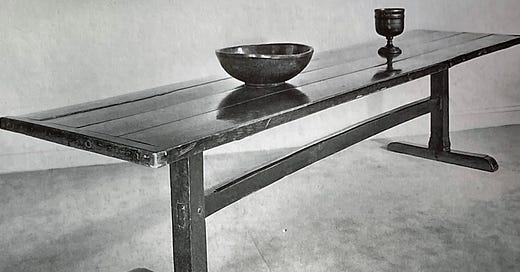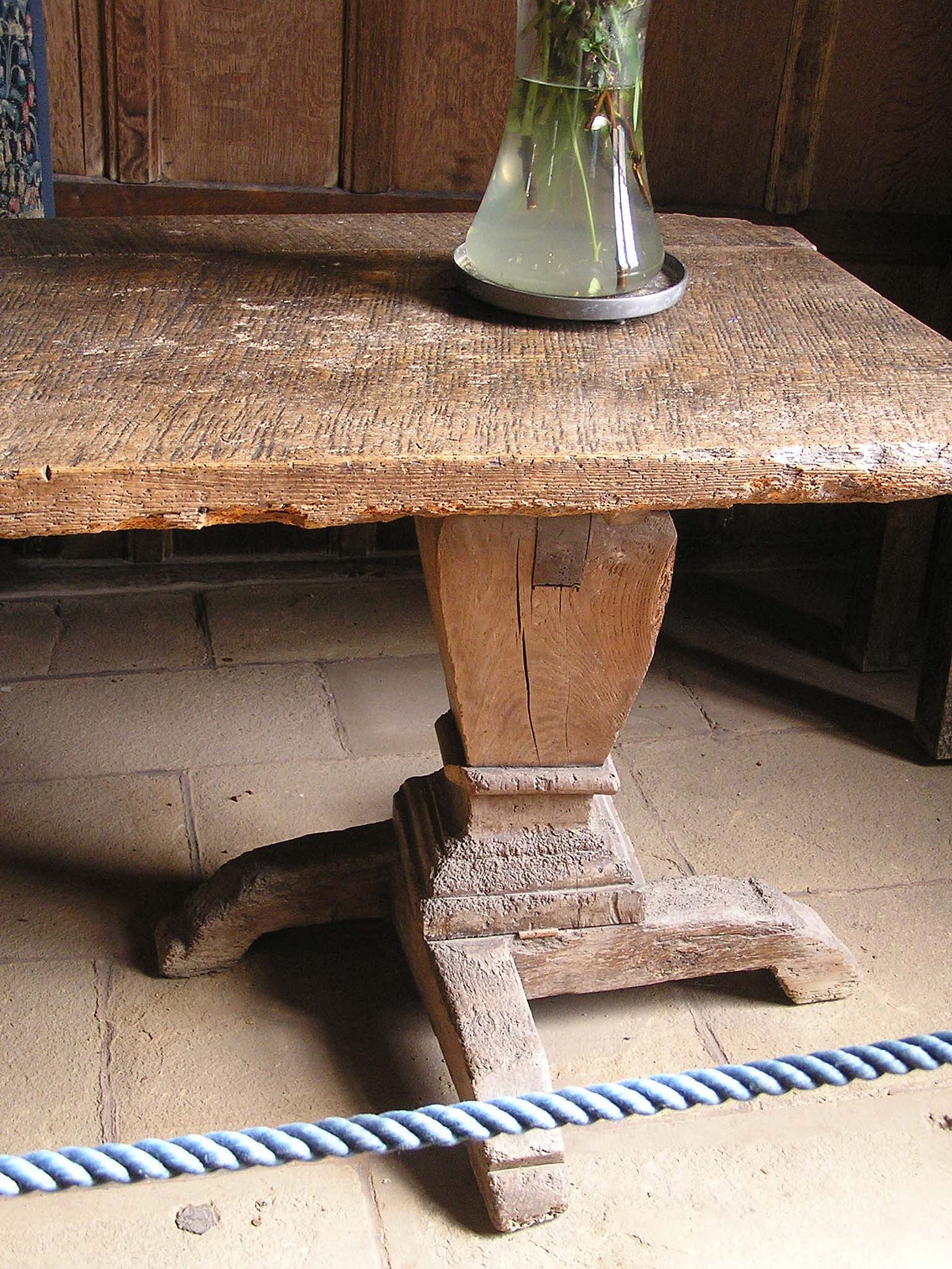For 20 years I worked in a museum setting, making reproduction furniture based on 17th century examples. In that work, I did a lot of research studying the forms, construction and use of household furniture. Eleven years ago, I left that job and have mostly been focused on making furniture and teaching woodworking since then. I stopped writing for “scholarly” publications a long time ago - it was always a process I liked, but the pay stunk. But I’ve been writing this blog now for nearly 3 years and it has revived my interest in the research and all the materials I’ve collected to inform that aspect of my work. And the support I get from subscribers makes it a winning proposition - it provides me with some of my income and allows me to keep working from home. I appreciate that support and I hope that readers here can either enjoy these research-based posts (like this recent series on tables) or at least put up with them until the next woodworking-action post comes along. Today - trestle tables.
What about trestle tables?
I don’t know what to think about them. They are dead-simple, my first table was one, I remember seeing it in Drew Langsner’s Country Woodcraft in 1978 and making a version a couple years later. But what about 17th century New England? Surely early New England records must have lots of references to them, so simple, effective, affordable. You would think so, but you would be wrong.
To look into the subject, I’ll start in old England. Early - yes, documentary records cite various versions - a 1618 inventory from Winterbourne in Gloucestershire includes “one table boord and tresselles” - a perfect combination. Discussing tables requires a detour into language - particularly the word “board.” You might be familiar with the term “sideboard” - in some places still a piece of furniture that’s associated with meals - but you don’t eat at or sit at it - it’s literally off to the side, usually designated as where food might be served from...also dishes and other tableware might be stacked there. The idea of “board” as a flat surface - I’ve been calling it the “table top” in these recent posts, distinct from the frame or support of the table.
So “board and trestles” is a combination we often see in period records, but sometimes they don’t even mention the trestles -
Inventory of Thomas Atwood, tailor of Iron Acton, 17 August 1587
In the hall:
One tableboard and 4 stoles 2s6d
In the parlor:
One table bord a cupboard and little form 6s8d
[the “little form” is a bench - presumably little means “short” in this case.
I remember seeing this board & trestle combination at Haddon Hall in Derbyshire - incredible thing, older than dirt.
The main thing about these trestles is they are not connected one to another. You can set this table up in a flash, take it apart likewise. The “table” or “board” just sits on the trestles, its weight keeps it in place.
The Haddon Hall version predates the 17th century by a long shot - but the concept carried into that period. As late as 1672 there’s probate inventory references like this one from Essex, England:
1672, John Draper, Writtle
One long table plank, 2 tressels,
Elsewhere in that collection is another reference:
1638, Henry Sharp, Writtle
in the hall: One table with Tressell & one forme & 3 bench bordes 12s
One table with “tressell” singular. Huh? How can that work? Victor Chinnery, in Oak Furniture: the British Tradition discussed trestle tables and pointed out part of the problem stemming from inventory references to them.
Randle Holme (1688) recorded “a Bench, a Forme, or a Tressell...” as alternative names for the same piece of furniture, viz a long stool or seat. This latter observation must throw some question on the exact interpretation of the common inventory reference to “a table with the trestles” (does this really mean a trestle table, or a table with accompanying benches?)
I looked up the Holme quote - here it is in full:
a countrey stoole, or a planke, or Block stoole, being onely a thick peece of wood, with either 3 or 4 peece of wood fastned in it for feet. Note that if these be made long, then they are termed, either a Bench, a Forme, or a Tressell; of some a long seate. Some of these stooles haue but three feete.
Most often there are trestles-plural. So what do they look like? The Haddon Hall version doesn’t look like what we now think of as a trestle table, with its dis-connected components. The trestle table that comes to mind now has two uprights connected to feet below and stout rails above that support the board(s) - and a long connecting stretcher between them. Like the example at the top of this post, from Chinnery’s book.
Keep reading with a 7-day free trial
Subscribe to Follansbee's Substack to keep reading this post and get 7 days of free access to the full post archives.






